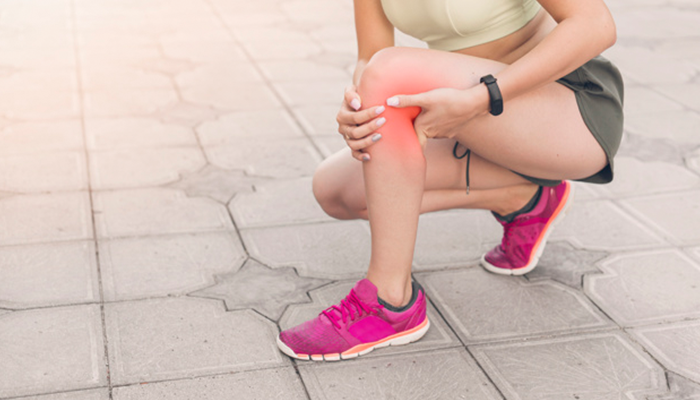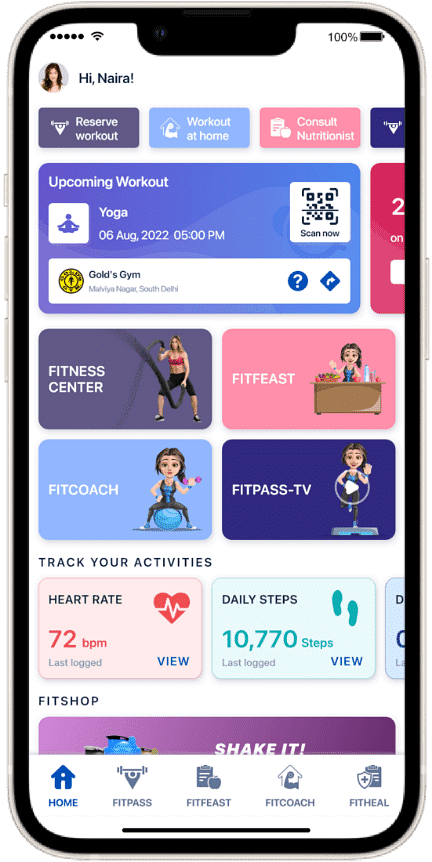Understanding Muscle Soreness: Causes and Remedies
Table of Contents
We all get sore muscles now and then and it might turn for the worse without complete information. But what is muscle soreness?
Ever woken up to the alarm going off and felt a stiff pain as you reach for the clock or the phone? That’s muscle soreness. It might be because you trained unusually hard last day. While it works as a motivation for some to keep going on, others feel the need to rest. It is commonly unknown that there is a way to prevent muscle soreness.
Causes of Muscle Soreness

- Immediate Muscle Soreness – the pain you feel during and after working out
- Delayed Onset Muscle Soreness (DOMS) – the pain that you feel 1 to 2 days after working out, which usually subsides after the 3rd day. It is a natural adaptive process initiated by the body after working out
Those who gradually increase the intensity, frequency or the duration of exercise, usually witness DOMS. It might occur due to participating in an unfamiliar physical activity as well. Moreover, you must have felt pain after resuming training after a long time. Stretching, applying ice (cryotherapy), massage, and non-steroidal anti-inflammatory drugs (NSAIDs) count as effective treatments. However, there seems to be debate over the efficacy of the treatment immediately after an unusual or intense workout.
It is better to avoid injuries than to seek treatment for them. To ensure that the exercise routine doesn’t turn out to be counterproductive, your workout regimen must be customized according to your body limits. FITCOACH is an A.I.-led training program that offers exercise according to your needs and preferences.
Is soreness limited to muscles?

Let’s be clear about one thing – joint and tendon soreness are more serious than muscle soreness. The pain usually feels the same, but one must be able to identify tendon and joint soreness from muscle soreness. The following are signs of joint or tendon soreness:
- Dull or sharp pain in the joints
- Swelling around the joint
- Pain or stiffness while moving the joint or when sitting, sleeping, etc.
- Difficulty falling asleep after a workout session. Sleep is essential for proper recovery after working out
- Moving in a way modified due to joint pain
- Dull or achy pain in the tendons. Tendons are the connections between bones and muscles. When tendons are not rested after an injury, they don’t heal completely, and this condition is known as Tendonitis
If you experience any of these symptoms or if the pain persists, you might need to see a doctor right away. Pain is an indication that you’re doing something wrong and need to rectify it immediately. You need to go for physiotherapy if the pain does not subside.
Is it alright if pain affects movement?

The intensity of your workout will determine the intensity of soreness. If you’re walking weird and looking for support to perform normal actions, then you probably overdid it. Soreness that makes you walk like a zombie or makes you groan isn’t normal.
If the pain is causing you to move with difficulty and regular actions are becoming painful, your joints and tendons are probably sore as well. Moreover, when the muscles are overworked and fatigued, the joints overcompensate in supporting your body. All in all, soreness that changes the way you do things means that you need to rest and probably see a doctor.
How long does soreness last?

Soreness that lasts more than 72 hours must be addressed at the earliest. If it lingers for more than 3 days, you’re probably exerting yourself too much or worse, doing it wrong. Moreover, if you go for a workout before the soreness has subsided, you will end up working muscles that haven’t fully recovered. In such a case, working out will only turn out to be counterproductive.
The last thing you should do is exercise a sore muscle, you can try massaging and foam rolling to relieve soreness in the fascia or the muscle tissue. The potential for the human body for resilience is high and we can condition our body to reduce soreness. But if you keep exercising with soreness, you will get injured over time.
Taking Care of Sore Muscles

The idea is to change what you’re doing instead of increasing the intensity of what you do. If you do so, you will experience light to moderate soreness, which can be handled. You will be able to balance out your workout to get the best out of the exercise.
- Repetitions – change the number of repetitions of exercises each week. For example, 12-15 reps in the first week, 8-10 reps in the second week, 6-8 reps in the third week, and then get back to 12-15 reps in the 4th week
- Exercises – make a point to alternate between different exercises for each body part. For example alternate between leg press and squats, and lying hamstring curls and standing hamstring curl. Try to choose different exercises for each body part each week
- Timing – just like with repetitions, change the rest time between sets. Let us say that you start with a 90-second break the first week. In the second week, rest for no more than 60 seconds between sets, 45 seconds in the 3rd week and return to 90 seconds in the 4th week
- Stability – Make a point to alternative between bilateral (both arms or legs at the same time) and unilateral (one arm or leg at a time) exercises
- Order – it will help you mix the order of things. If you exercise in the order of chest shoulders, triceps, legs and so on, change it to maybe triceps, shoulders, legs, and chest at the last
- Rhythm – it is important to follow the 5-2 rule during weight training repetitions. Take 5 seconds with each repetition with complete pauses at the highest resistance. This will restrict the tension to the muscles and keep the joints intact.
- Environment – sometimes the best thing is to do things differently. Try going to a different gym or fitness studio. Or try a different workout routine; take a new class. FITPASS gives you access to endless workout sessions at 3,500+ premium fitness centers across 12 major cities of India. Try new workout routines whenever you feel like it.
Wherever you go, don’t forget to take your music with you to motivate yourself.


